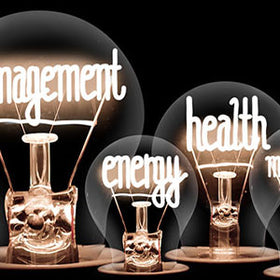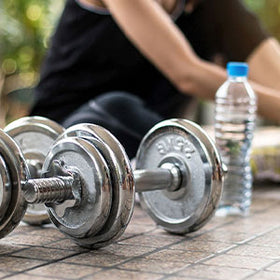What is Reflexology?
Reflexology is a massage technique used on the feet, hands, and ears that involves applying different amounts of pressure to stimulate certain areas of the body and relieve tension. It’s based on a belief that these body parts are connected to certain organs and systems. Reflexologists assert that applying pressure to these areas offers a range of health benefits. In massage chairs, you’ll typically find this in the form of reflexology massage rollers in the footrest.
How Does Reflexology Work?
There are a few theories about how reflexology serves the body. A primary theory comes from Chinese medicine.
In Traditional Chinese Medicine
In Chinese medicine, there is a belief in the “vital energy” in the form of qi. According to this belief, qi flows through each person, and when a person feels stressed, their body blocks the flow of qi. This can cause an imbalance that in turn can cause illness. Reflexology aims to keep qi flowing through the body, maintaining balance and helping the body stay disease-free.
In Chinese medicine, different organs and systems correspond with different pressure points on the body. Reflexologists use maps of these points in the feet, hands, and ears to guide their massage treatment in an effort to send energy flowing through a person’s body until it reaches the spot that needs healing.
Other Theories
In the 1890s, British scientists determined that the skin and organs were connected by nerves and that the body’s nervous system typically adjusts to outside stimuli, including touch. A reflexologist’s touch could work to calm the central nervous system, encouraging relaxation and other benefits usually experienced with massage.
There is also a belief that the brain produces pain as a subjective experience. In some instances, the brain is responding to a physical, outside source of the pain, however, in other cases, emotional or mental distress causes the body to experience pain. Reflexology can lessen pain through calming touch because it improves someone’s mood and reduces stress, thereby producing good-feeling hormones- endorphins.
Finally, zone theory holds that the body includes 10 vertical zones. Each zone exists in different body parts and corresponds to specific fingers and toes. Those that practice under this theory believe that manipulating these fingers and toes can access those internal body systems for an overall benefit.
What are the Potential Benefits of Reflexology?
Reflexology is linked to a number of potential benefits, but only a few of them have been scientifically studied.
As of now, reflexology has been shown to help to:
- decrease stress and anxiety
- lessen pain
- elevate your mood
- promote general well-being
In addition, those who’ve enjoyed reflexology say it helped them:
- boost their immune system
- get over colds and bacterial infections quicker
- alleviate sinus issues
- recover from back issues
- right hormonal imbalances
- improve digestion
- reduce arthritis pain
- treat nerve problems and numbness
What Does the Research Say?
There aren’t many studies on reflexology. While it doesn’t work as the sole medical treatment, it can have some value as a complementary therapy that eases some symptoms and improves someone’s quality of life, much like a massage.
The work of massage on the feet and hands can be extremely relaxing, and a less stressed body can heal better. Massage in general works well in this regard and reflexology is similar.
Pain
In a 2011 study funded by the National Cancer Institute, experts studied how reflexology treatments affected 240 women with advanced breast cancer. All women were undergoing the necessary medical treatment, such as chemotherapy, for their cancer.
The study found that reflexology served to lessen some of their symptoms, including shortness of breath. The participants also stated they felt their quality of life improved.
Experts have also looked at the effects of reflexology on pain in women dealing with premenstrual syndrome (PMS). In an older study, researchers studied the effects of ear, hand, and foot reflexology on 35 women who had reported issues with PMS symptoms.
They found that those who received two months of reflexology treatment reported dramatically fewer PMS symptoms than the women who did not. To really understand its benefits larger, long-term studies are needed.
Anxiety
In a small study from 2000, researchers studied the effects of one 30-minute foot reflexology treatment on those being treated for breast or lung cancer. After the treatment, they reported lower levels of anxiety than those who didn’t receive reflexology.
All in all, many studies have shown that reflexology as a form of massage can be good for alleviating anxiety as it helps the body release endorphins.
Reflexology in Massage Chairs
In most massage chairs, you’ll find reflexology units in the footrest. The rollers in these footrests have been designed to stimulate those special points in your feet to provide ultimate kneading and relaxation. When you work on your feet all day long or suffer from lower extremity swelling or numbness, this feature can be wonderful.
If you have any questions about massage chairs and how they might provide this type of massage, don’t hesitate to reach out. We’re available over the phone or through email at info@massagechairplanet.com.




